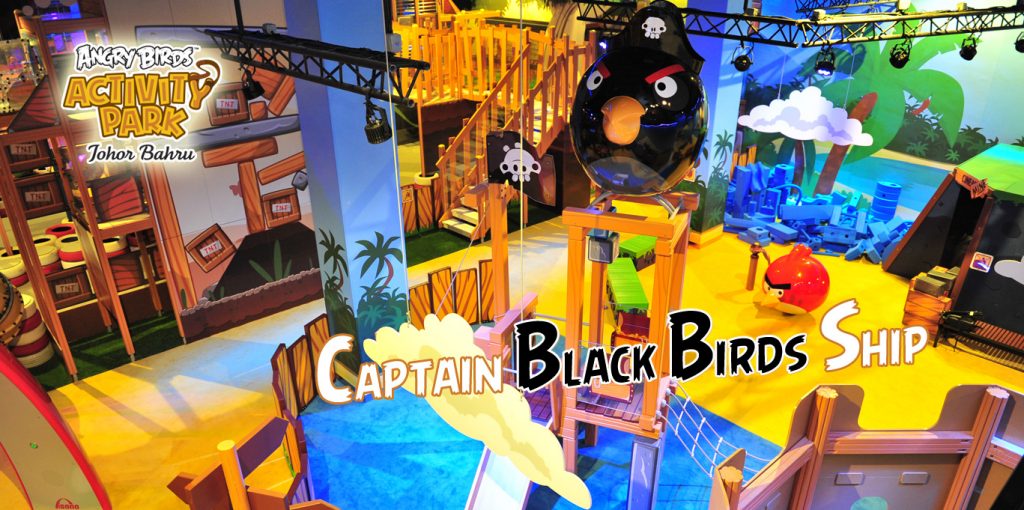Time, like many things in life, is a basic example of something that is socially constructed. Regardless, as 2019 draws to an end, wrapping up a decade of unquantifiable growth and decay, it’s hard not to ponder and reflect on what the coming one will look like. But before we dive into a whole new decade, let’s take a look at some of the things that happened in this one.
If there’s one thing that’s stayed consistent throughout the decade, it’s the existence of trends. Since the word viral was started to be used to describe something that is circulated rapidly and widely from one Internet user to another, internet fads have become inescapable. Here, we take a look at the most viral internet trends from the whole decade.
2010: Angry birds
Remember when everyone was playing Angry Birds? You might remember playing it on your iPad for an enhanced experience because the first iPad was launched in 2010. Angry birds was technically launched in December 2009, before the start of the decade but it wasn’t until 2010 that people were hooked.
Malaysians loved Angry Birds so much, an Angry Birds Activity Park was built in Johor.

2011: Planking
On the list of challenges this decade has seen, first up on our list is the planking challenge. Seen as a global participatory art project, the rules for this challenge were simple: you must lie face down, palms flat against your sides, with your feet together and pointing at the floor.
The challenge became viral on social media with photos of people planking at the most unlikely places. In Malaysia, the challenge even penetrated local political agenda when previous Member of Parliament for Bakri Constituency in the state of Johor, Er Teck Hwa, started a planking campaign in resistance to an increase in electricity prices.


2012: Kony 2012 / Gangnam style
The year 2012 was peculiar. A worrying number of people truly believed the world was going to end that year. An even more worrying number of people believed a conspiracy theory connecting a South Korean artist’s music video that became the most viewed video on Youtube in 2012, to Nostradamus’s doomsday prediction. 2012 was truly something.
But what some of us might have forgotten is the short documentary film produced by Invisible Children – Kony 2012. It was released on March 5, 2012 and took the internet by storm.
Looking back, the Kony 2012 campaign video achieved what most online marketers dream of achieving. Regardless of the campaigns genuinity and sustainability from there onwards, the sheer volume of conversation it sparked was something to be in awe of and at the same time, a true testament to humans’ gullibility when you mix a social cause, decent production value and clear call-to-action.
On one hand, the campaign received a lot of negative reception for its oversimplification of events in the region it focused on. On the other, Aerosmith’s Joe Perry wrote a song about child soldiers in Uganda because he was outraged by the story of Joseph Kony. We imagine marketers all around the globe rolling their eyes with inevitable envy.


2013: Harlem Shake
Internet, meme, video. Combine these three and you’ll probably think of the 2013 Harlem Shake. Not to be confused with the actual harlem shake dance or song, the viral internet meme’s success can be attributed to these factors: its jump cuts, hypnotic bear, quick setups and thirty second routines. Some local businesses also participated in the meme, in an attempt to stay ahead of a trend while garnering publicity.
2014: Ice Bucket Challenge
Starting July 2014, we started seeing videos of people pouring a bucket of ice over them, popping up all over our social media. The Ice Bucket Challenge, sometimes more appropriately called the ALS Ice Bucket Challenge, was an activity that became a trending campaign to promote awareness on amyotrophic lateral sclerosis (ALS), also known as Motor Neuron Disease (MND). The internet trend ended up raising over USD 115 million for the ALS Association which helped the research team make a significant discovery.
In Malaysia, legacy football player, Mokhtar Dahari who diagnosed with MND and battled with the disease for three years before he died at the age of 31. Then Youth Sports Minister, Khairy Jamaluddin, who was among the few Malaysians who participated in the Ice Bucket Challenge, did it as a tribute to the football legend.
2015: Debate over the dress
The dress is a washed-out photograph which went viral in 2015, revealing differences in human color perception. The photo was first posted on Tumblr and sparked a global debate on whether the dress was #whiteandgold or #blueandblack. The dress, which was in fact blue, appeared as white to some and after multiple existential spasms polarizing the entire internet, the most common and credible explanation is that the difference in opinion is a result of how the human brain perceives color and the various hues of daylight sky.

2016: Pokemon Go
Augmented Reality has become a lot more accessible over the last two years and part of its success can be attributed to Pokémon Go, which was released by Niantic in 2016. The game quickly became one of the most popular smartphone applications with 84 million users in 2016 from the Asia Pacific region alone.
In Malaysia, the game was extremely popular with pokestops all over, even causing MCMC to issue a general security guideline for players.
Nintendo’s shares increased by more than 50% since the game was released.

2017: Fidget Spinners
2017 was the year of fidget spinners. Marketed as a toy for people who have trouble focusing or to relieve nervous energy, anxiety, or psychological stress, it even went as far as claiming to help people who have anxiety and other neurological disorders like ADHD and autism. Despite the lack of scientific evidence on its effectiveness, the toy grew in popularity globally, especially among children and teenagers. Malaysia’s education ministry even considered banning it.
The rise of the toy’s popularity was also credited to brilliant marketing, making it a case-study on the product marketing. An article on Forbes on the benefits fidget spinners offer children and adults, marked the beginning of the toy’s cult following.
After making its first appearance at the North American International Toy Fair in February of 2017, an estimated 200 million fidget spinners were sold within the first four months and by 2019, it accounted for 17 percent of all daily toy sales in the US.
2018: In My Feelings challenge
In 2018, the ‘In My Feelings Challenge’ also known as the ‘Kiki Challenge’ became a viral dance trend in which people danced outside of an open car door, inspired by Canadian rapper, Drake’s song of the same name.
Following a video posted by the famous Instagram comedian, Shiggy (@theshiggyshow) of him dancing to Drake’s song outside of an open car door, the trend spread like wildfire. Even celebrities like Will Smith participating in the challenge.
Malaysians couldn’t resist participating in the trend either, until JPJ announced that those caught filming themselves dancing outside a moving car will be fined as it puts the safety of others at risk.
2019: 10 year challenge
Unsurprisingly, in 2019 the viral trend was reflective of the whole decade. The 10 year challenge, despite not being all that challenging, is where people post a photo from the beginning of the decade and compare it to their most recent photo. Aside from celebrity participation and some shocking transformations, what makes this challenge entertaining is people’s different takes on what the 10 year challenge actually compares.




MARKETING Magazine is not responsible for the content of external sites.









